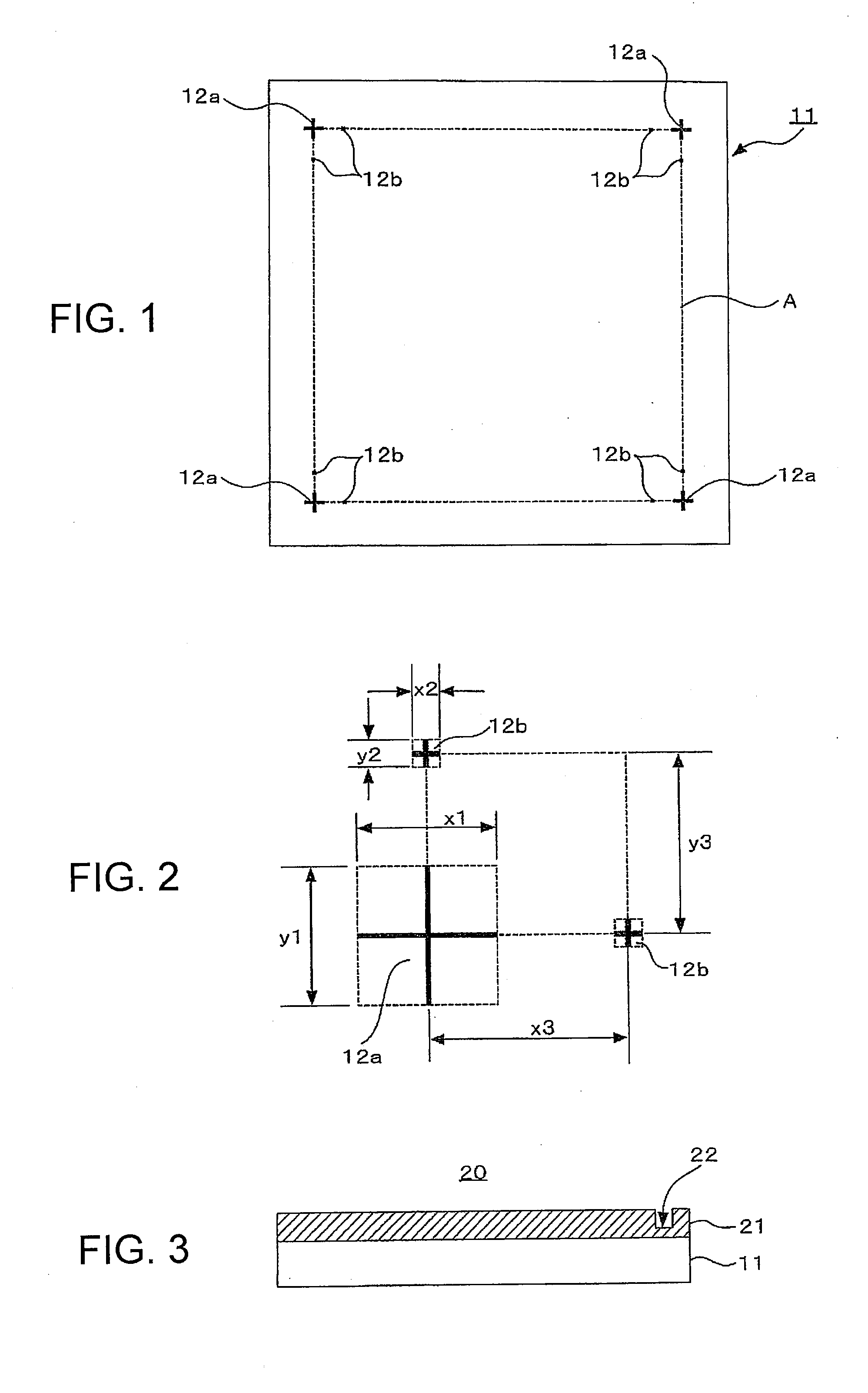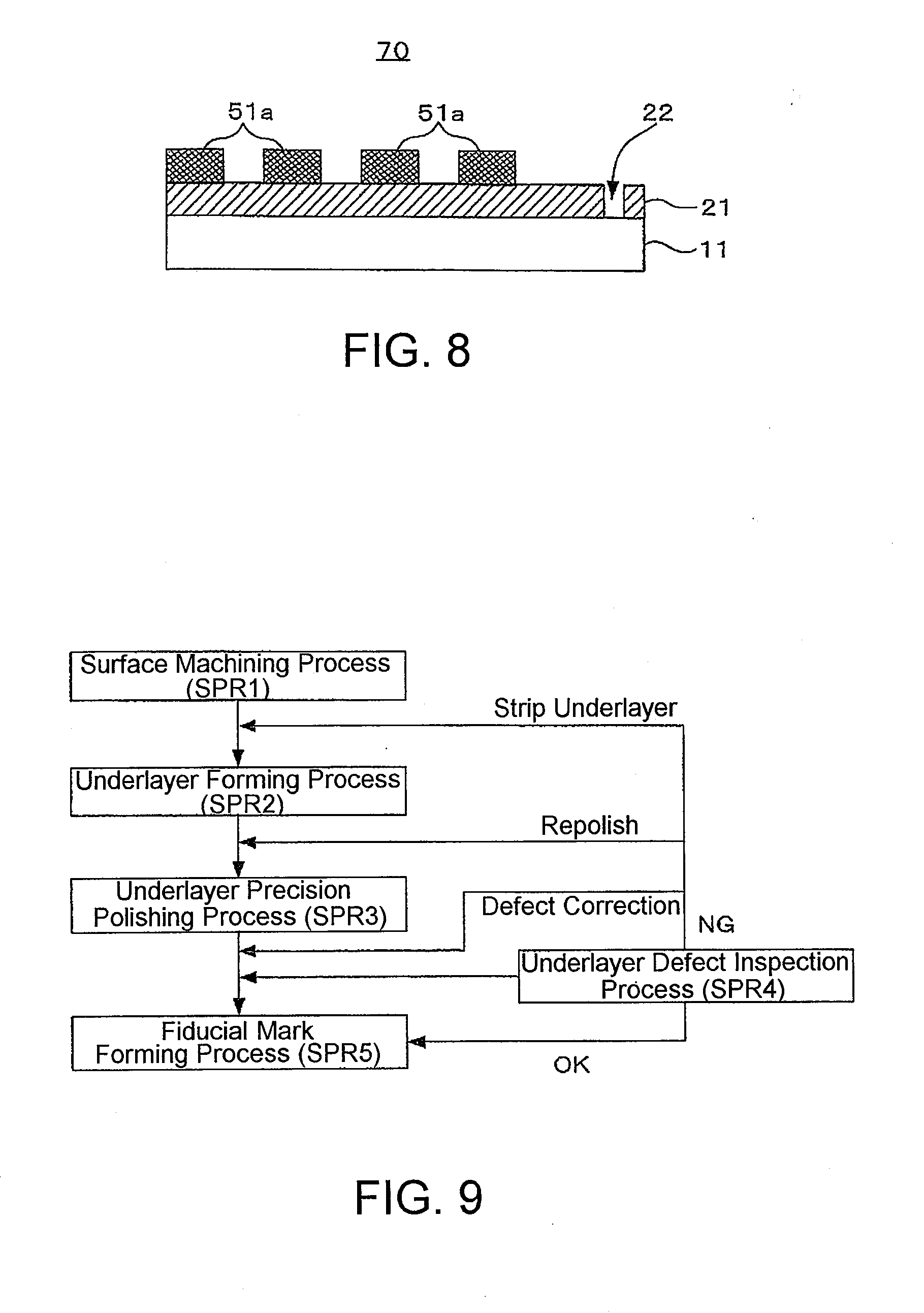Mask blank glass substrate, multilayer reflective film coated substrate, mask blank, mask, and methods of manufacturing the same
a reflective film and mask technology, applied in the field of masks, can solve the problems of difficult to achieve high smoothness, difficult to reuse or recycle substrates by stripping, and often used high-value-added expensive substrates, and achieve the effect of enhancing the detection accuracy of a defect position
- Summary
- Abstract
- Description
- Claims
- Application Information
AI Technical Summary
Benefits of technology
Problems solved by technology
Method used
Image
Examples
example 1
[0199]1)>
[0200]A SiO2-TiO2-based glass substrate (size: about 152.4 mm×about 152.4 mm, thickness: about 6.35 mm) was prepared. Specifically, using a double-side polishing machine, both front and back surfaces of the glass substrate were polished stepwise with cerium oxide abrasive particles and colloidal silica abrasive particles and then treated with low-concentration fluorosilicic acid. The surface roughness of the prepared glass substrate, measured by AFM (atomic force microscope), was 0.25 nm in RMS (measurement region: 1 μm×1 μm).
[0201]The surface shape (flatness) of both front and back surfaces of the glass substrate was measured by a flatness measuring apparatus (UltraFlat: manufactured by Tropel Corporation) (measurement region: 148 mm×148 mm).
[0202]As a result, the flatness of the front and back surfaces of the glass substrate was about 290 nm.
[0203]The surface shape (flatness) measurement results of the front and back surfaces of the glass substrate were each stored in a c...
example 2
[0240]In Example 1, a CrN underlayer (Cr: 90 at %, N: 10 at %) having an amorphous crystal structure was used instead of the Si underlayer. Specifically, using a Cr target and using a mixed gas of Ar, He, and N2 as a sputtering gas, DC magnetron sputtering was carried out to form a CrN underlayer having a thickness of 100 nm.
[0241]A surface of the CrN underlayer was precision-polished in the same manner as in Example 1. As a result, in a 142 mm×142 mm measurement region, the flatness was 85 nm and thus satisfied the target value of 100 nm or less. Further, in a 1 μm ×1 μm measurement region, the surface roughness was 0.10 nm in RMS and thus was satisfactory.
[0242]Since the surface of the CrN underlayer has an extremely high smoothness of 0.1 nm or less in RMS, background noise in a highly sensitive defect inspection apparatus is reduced, which is effective in terms of suppressing false defect detection.
[0243]Further, in a 1 μm ×1 μm measurement region, the maximum surface roughness ...
example 3
[0251]Next, a description will be given of an example where, in Example 2, defects are found in the defect inspection of the underlayer so that the underlayer is stripped to recycle the glass substrate.
[0252]Since a number of defects having a size of 60 nm were detected in the defect inspection of the surface of the CrN underlayer using the mask blank defect inspection apparatus (MAGICS M1350: manufactured by Lasertec Corporation) (inspection region: 142 mm×142 mm), the CrN underlayer was entirely dry-etched with a mixed gas of Cl2 and 02 to be removed.
[0253]In this case, the SiO2-TiO2-based glass is not etched with the mixed gas of Cl2 and O2. Therefore, the surface roughness of the main surface of the glass substrate after stripping the CrN underlayer was measured to be 0.4 nm in RMS. The flatness was 80 nm and thus was satisfactory.
[0254]After stripping the CrN underlayer, the glass substrate was cleaned with an alkaline aqueous solution and then a CrN underlayer was formed again...
PUM
 Login to View More
Login to View More Abstract
Description
Claims
Application Information
 Login to View More
Login to View More - R&D
- Intellectual Property
- Life Sciences
- Materials
- Tech Scout
- Unparalleled Data Quality
- Higher Quality Content
- 60% Fewer Hallucinations
Browse by: Latest US Patents, China's latest patents, Technical Efficacy Thesaurus, Application Domain, Technology Topic, Popular Technical Reports.
© 2025 PatSnap. All rights reserved.Legal|Privacy policy|Modern Slavery Act Transparency Statement|Sitemap|About US| Contact US: help@patsnap.com



